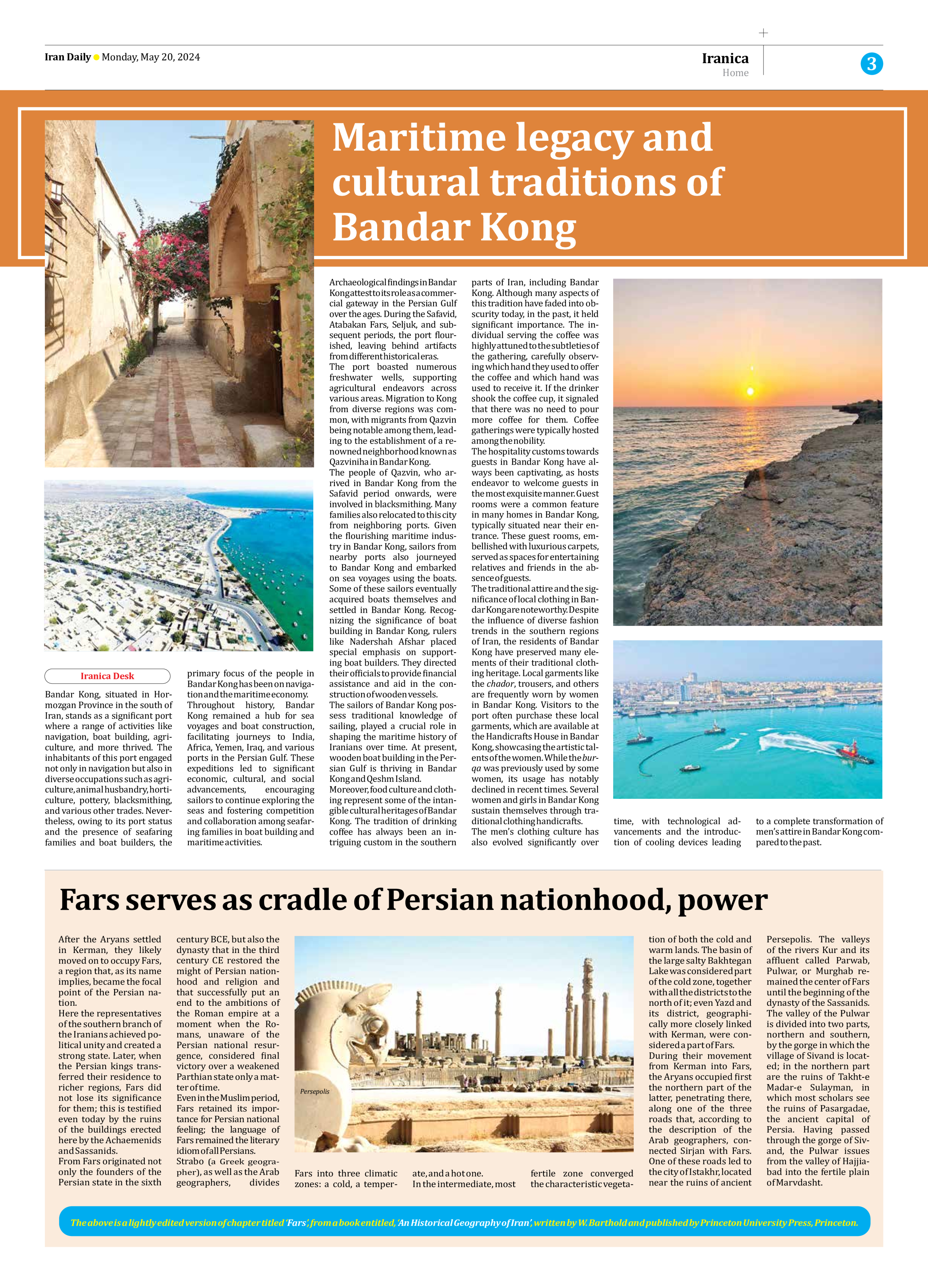
Maritime legacy and cultural traditions of Bandar Kong
Bandar Kong, situated in Hormozgan Province in the south of Iran, stands as a significant port where a range of activities like navigation, boat building, agriculture, and more thrived. The inhabitants of this port engaged not only in navigation but also in diverse occupations such as agriculture, animal husbandry, horticulture, pottery, blacksmithing, and various other trades. Nevertheless, owing to its port status and the presence of seafaring families and boat builders, the primary focus of the people in Bandar Kong has been on navigation and the maritime economy.
Throughout history, Bandar Kong remained a hub for sea voyages and boat construction, facilitating journeys to India, Africa, Yemen, Iraq, and various ports in the Persian Gulf. These expeditions led to significant economic, cultural, and social advancements, encouraging sailors to continue exploring the seas and fostering competition and collaboration among seafaring families in boat building and maritime activities.
Archaeological findings in Bandar Kong attest to its role as a commercial gateway in the Persian Gulf over the ages. During the Safavid, Atabakan Fars, Seljuk, and subsequent periods, the port flourished, leaving behind artifacts from different historical eras.
The port boasted numerous freshwater wells, supporting agricultural endeavors across various areas. Migration to Kong from diverse regions was common, with migrants from Qazvin being notable among them, leading to the establishment of a renowned neighborhood known as Qazviniha in Bandar Kong.
The people of Qazvin, who arrived in Bandar Kong from the Safavid period onwards, were involved in blacksmithing. Many families also relocated to this city from neighboring ports. Given the flourishing maritime industry in Bandar Kong, sailors from nearby ports also journeyed to Bandar Kong and embarked on sea voyages using the boats. Some of these sailors eventually acquired boats themselves and settled in Bandar Kong. Recognizing the significance of boat building in Bandar Kong, rulers like Nadershah Afshar placed special emphasis on supporting boat builders. They directed their officials to provide financial assistance and aid in the construction of wooden vessels.
The sailors of Bandar Kong possess traditional knowledge of sailing, played a crucial role in shaping the maritime history of Iranians over time. At present, wooden boat building in the Persian Gulf is thriving in Bandar Kong and Qeshm Island.
Moreover, food culture and clothing represent some of the intangible cultural heritages of Bandar Kong. The tradition of drinking coffee has always been an intriguing custom in the southern parts of Iran, including Bandar Kong. Although many aspects of this tradition have faded into obscurity today, in the past, it held significant importance. The individual serving the coffee was highly attuned to the subtleties of the gathering, carefully observing which hand they used to offer the coffee and which hand was used to receive it. If the drinker shook the coffee cup, it signaled that there was no need to pour more coffee for them. Coffee gatherings were typically hosted among the nobility.
The hospitality customs towards guests in Bandar Kong have always been captivating, as hosts endeavor to welcome guests in the most exquisite manner. Guest rooms were a common feature in many homes in Bandar Kong, typically situated near their entrance. These guest rooms, embellished with luxurious carpets, served as spaces for entertaining relatives and friends in the absence of guests.
The traditional attire and the significance of local clothing in Bandar Kong are noteworthy. Despite the influence of diverse fashion trends in the southern regions of Iran, the residents of Bandar Kong have preserved many elements of their traditional clothing heritage. Local garments like the chador, trousers, and others are frequently worn by women in Bandar Kong. Visitors to the port often purchase these local garments, which are available at the Handicrafts House in Bandar Kong, showcasing the artistic talents of the women. While the burqa was previously used by some women, its usage has notably declined in recent times. Several women and girls in Bandar Kong sustain themselves through traditional clothing handicrafts.
The men’s clothing culture has also evolved significantly over time, with technological advancements and the introduction of cooling devices leading to a complete transformation of men’s attire in Bandar Kong compared to the past.







